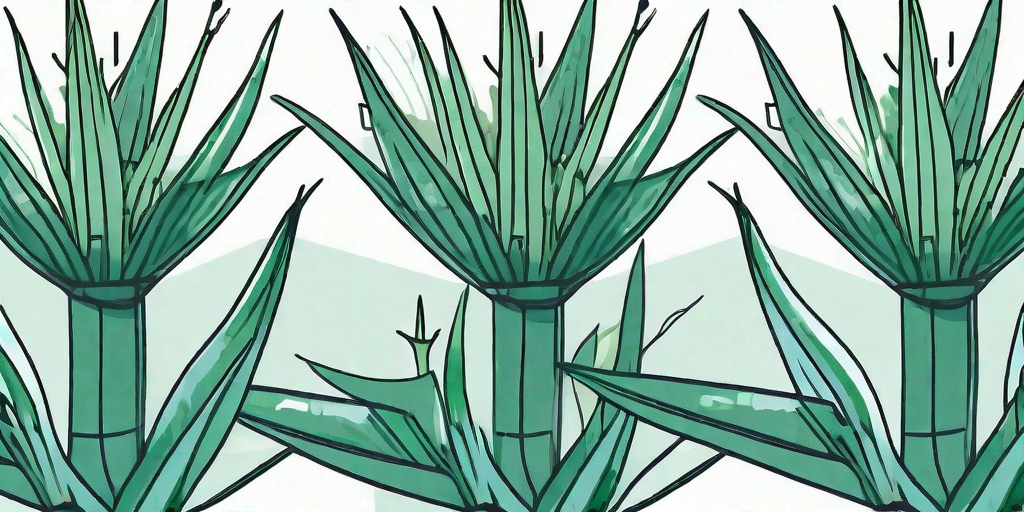
Ah, the Aloe plant! This spiky, green wonder has been gracing our homes and gardens for centuries, offering not only aesthetic appeal but also a host of medicinal benefits. But how do we ensure that our Aloe plants thrive in the great outdoors? Well, buckle up, dear reader, because we're about to embark on a journey of Aloe enlightenment.
Understanding Your Aloe: A Brief Introduction
Before we delve into the nitty-gritty of Aloe care, let's take a moment to appreciate this plant's rich history. Originating from the Arabian Peninsula, the Aloe plant has been used for both medicinal and decorative purposes for over 6,000 years. It's like the Swiss Army Knife of the plant world!
There are over 500 species of Aloe, but the most popular is undoubtedly Aloe Vera, known for its healing properties. But whether you're dealing with an Aloe Vera or an Aloe Arborescens, the care principles remain the same. So let's roll up our sleeves and get to work!
Choosing the Perfect Spot: Location, Location, Location
Like a sunbathing tourist, Aloe plants love the sun. They need at least six hours of sunlight each day to thrive. So, when choosing a spot for your Aloe, think sunny thoughts. A south or west-facing location is ideal.
But remember, while Aloe plants love the sun, they're not so fond of the cold. If temperatures in your area drop below 50°F (10°C), you might want to consider bringing your Aloe indoors for the winter. They may be tough, but they're not invincible!
What About Soil?
Aloe plants aren't picky eaters, but they do have a preference for well-draining soil. A sandy or gritty soil mix is perfect. Think beach vacation, not swamp tour.
When it comes to pH, Aloe plants prefer slightly acidic soil, with a pH between 6 and 8. If you're unsure about your soil's pH, you can easily test it using a soil pH testing kit. If your soil is too alkaline, adding some organic matter like compost can help to lower the pH.
Watering Your Aloe: Not Too Much, Not Too Little
Watering is where many Aloe parents go wrong. These plants are succulents, which means they store water in their leaves. Overwatering can lead to root rot, which is as nasty as it sounds. The key is to water deeply but infrequently.
So how do you know when your Aloe needs a drink? A good rule of thumb is to let the top inch of soil dry out between waterings. And remember, it's better to underwater than overwater. Your Aloe will thank you for it!
Feeding Your Aloe: A Little Goes a Long Way
While Aloe plants aren't big eaters, they do appreciate a little snack every now and then. A slow-release fertilizer applied in the spring and summer can give your Aloe the nutrients it needs to grow strong and healthy.
But be careful not to overdo it. Too much fertilizer can cause the leaves to become soft and mushy. And nobody likes a mushy Aloe!
Pruning and Propagating: The Art of Aloe Maintenance
Pruning your Aloe plant not only helps to keep it looking neat and tidy, but it can also encourage new growth. The best time to prune is in the spring or early summer, when the plant is actively growing.
When it comes to propagation, Aloe plants make it easy. They produce offsets, or "pups", which can be removed and planted to create new Aloe plants. It's like getting free plants!
Dealing with Pests and Diseases
While Aloe plants are generally hardy, they can still fall victim to pests and diseases. Common culprits include mealybugs, scale, and aphids. If you notice any unusual spots or discoloration on your Aloe, it's time to play detective.
Most pests can be dealt with using a mild insecticidal soap. As for diseases, prevention is the best cure. Ensuring your Aloe has the right conditions – plenty of sun, well-draining soil, and not too much water – can help to keep it healthy and disease-free.
Frequently Asked Questions
- Why are the leaves on my Aloe plant turning brown?
This could be a sign of sunburn. While Aloe plants love the sun, they can still get burned if exposed to too much direct sunlight. Try moving your Aloe to a slightly shadier spot.
- Can I use the gel from my Aloe plant on my skin?
Absolutely! Aloe gel has been used for centuries to soothe burns and skin irritations. Just make sure to test a small amount on your skin first to rule out any allergies.
- Why is my Aloe plant drooping?
This could be a sign of overwatering. Remember, Aloe plants are succulents and don't need a lot of water. Let the top inch of soil dry out between waterings.
Conclusion
There you have it, folks! With a little love and care, your Aloe plant can thrive in the great outdoors. So go forth, unleash the beauty of your Aloe, and watch as it rewards you with its stunning green leaves and medicinal benefits. Happy gardening!















